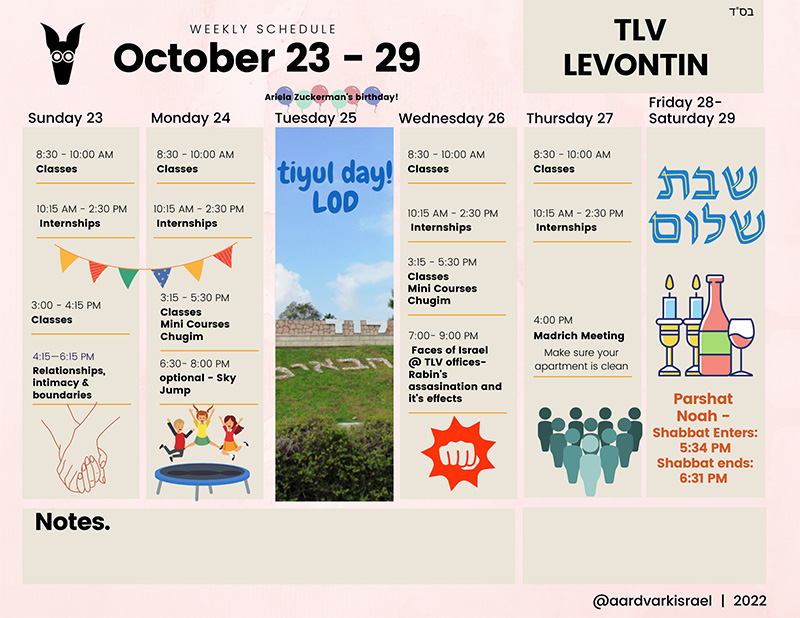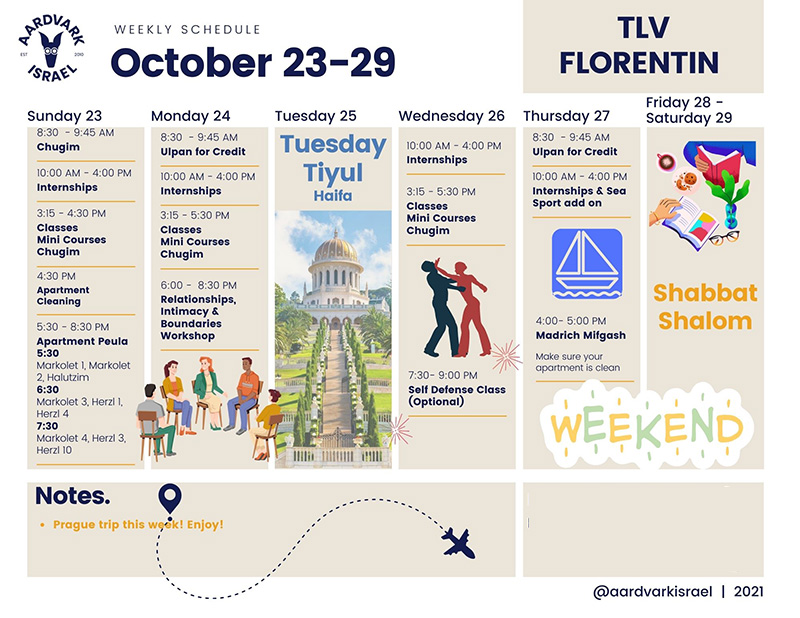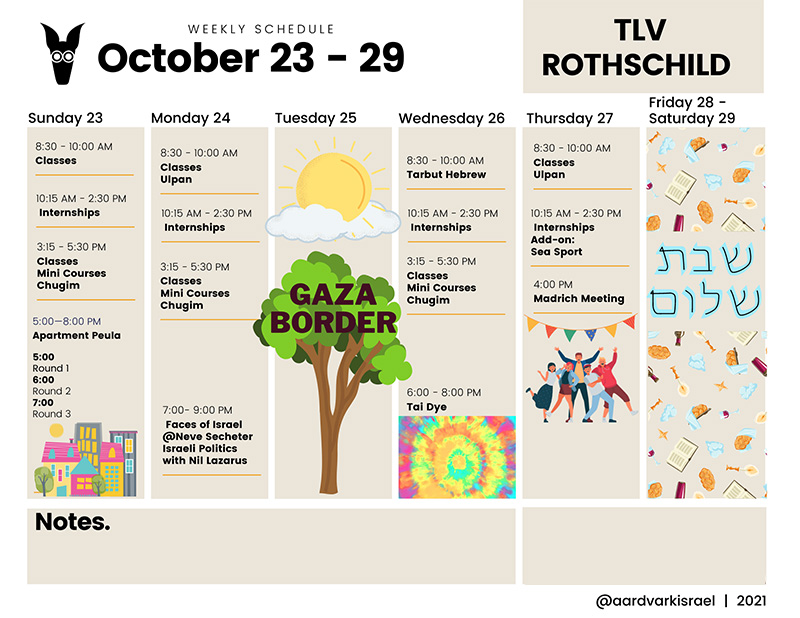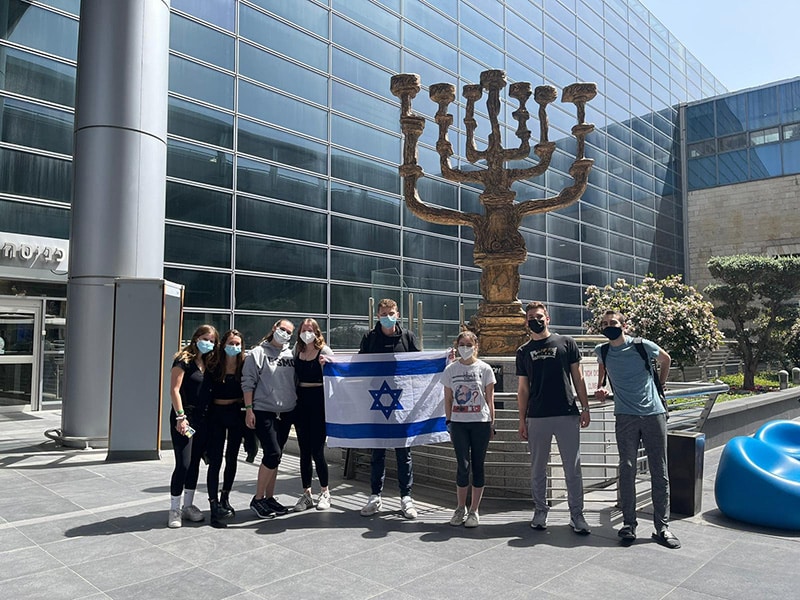
Shalom Parents and Students!
Here we meet again! Our students are officially back into routine and are got back to their internships, volunteering and classes. This time, we are going to give you a sneak pick of one of our unique add-ons – Selah, our Jewish Enrichment Track. Ready to go? Scroll down to read it all! >>
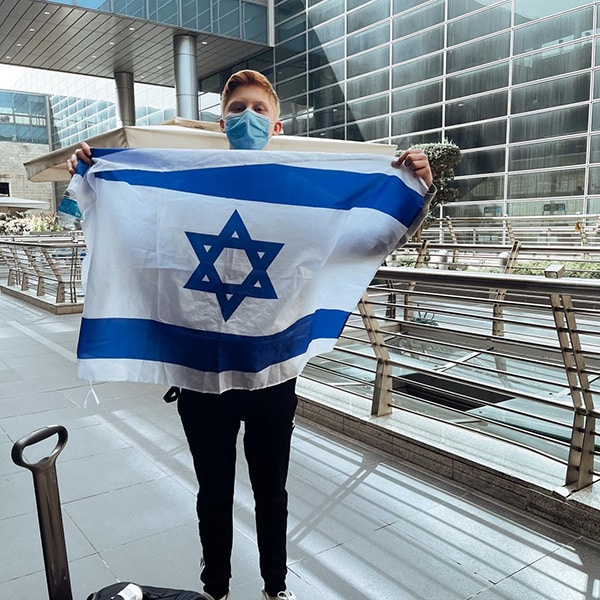
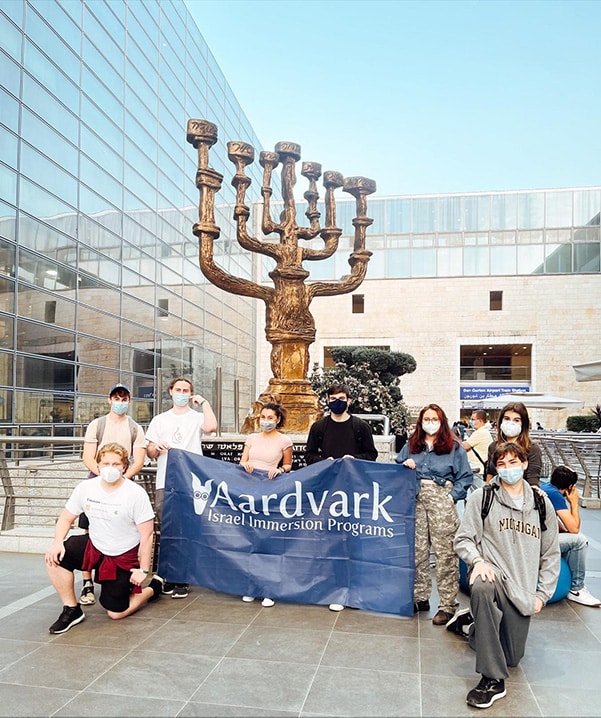
But right before we jump to Selah, we can’t send a newsletter without showing you where our students traveled this week, can’t we? So this week, on Tuesday Tiyul, our communities traveled to Nachal (River) Arugot and the Dead Sea, a must-visit attraction here in Israel. Nachal Arugot is a beautiful stream right outside of the Dead Sea, with fresh water, which gave our students one last chance to cool off in the last days of Summer before Fall arrives in Israel (spoiler: it will still be hot, after all, it’s Israel!).
Levontin community traveled to Nachal Alon, up north and after a short hike, were welcomed by the Druze community at Daliyat Al-Karmel. They learned about the cores of the Druze religion, their relationship with the Israeli government and the Jewish society, and the difficulties of being a minority in Israel.
Our Jerusalem community traveled to Makhtesh (crater) Ramon, located an hour and a half from Be’er Sheva. The students hiked this famous, beautiful nature reserve, seeing the world’s largest erosion circle in the world.
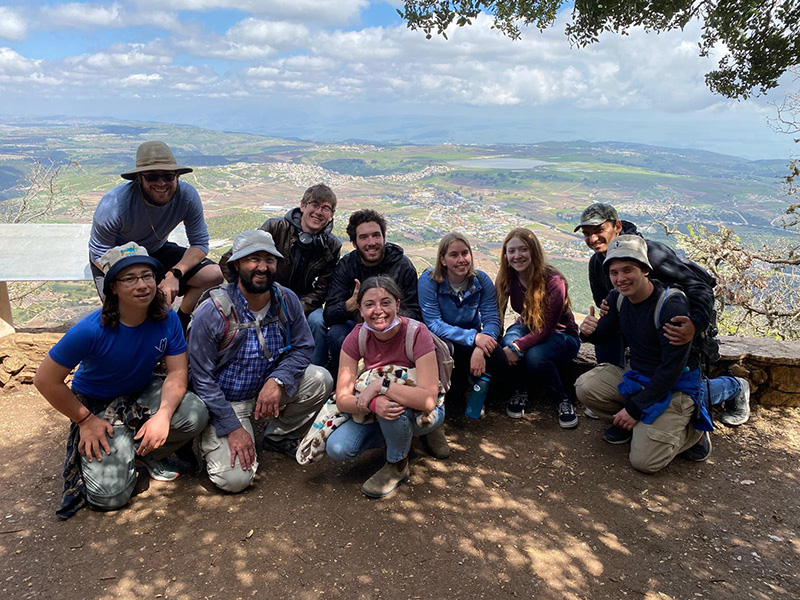

Sylvie Green, our student from London, who currently lives in Jerusalem, told us about her experience so far with Selah, our Jewish Enrichment Track: “Though we are based in Jerusalem, the universal Jewish spiritual hub, it is sometimes hard to feel a deeper connection with the hustle and bustle of friendships, internships and the rush of daily life. Personally, the Selah track is a means to root me back to my Jewish connection, helping me to realise why I came to Jerusalem on Aardvark.
Selah sessions, led by Rabbi Liad comprise thought-provoking Monday discussions, whereby boundless topics are fleshed out stemming from the meaning of life to Yom Tov, or Rosh Ha’Shana, and thrilling Thursday trips. These trips have included activities like snorkeling for tekhelet and shofar making. Rabbi Liad has created a smaller community for our Selah family which exists within the larger Aardvark group. I have found it hard moving away from home and often forget why I made this move. However, every Monday, lounging in the Aardvark office, in central Jerusalem, I am reminded that I came here to find where I stand religiously. This is partly done through Rabbi Liad’s countless intriguing tales. As Issac Bashevis Singer recounts, ‘Stories should be used to wake someone up, not just to put them to sleep’. Rabbi Liad’s outpour of exciting tales certainly awakens our group spiritually and physically! As the American post-war playwright, Tennessee Williams writes ‘we are all sentenced to solitary confinement in our own bodies and personal lyricism is the outcry from prisoner to prisoner’. Indeed, Liad’s stories, his means of ‘personal lyricism’, connect our group through a collective pride of Judaism, reverting a sense of isolation that is often common in teenagers like us.
In our first Selah session Rabbi Liad poetically exclaimed that ‘Every creation was created to get to know their creator’. Living in Jerusalem, so close to the Kotel and feeling the spiritual aura through the ether, I hope to use this period of time I have on Aardvark to ‘get to know my creator’ better. I feel this can be achieved through our Monday and Thursday Selah sessions navigating, shaping and directing our group because just being in the spiritual setting of Jerusalem may not always be enough.
On Thursdays, we leave the classroom setting and approach our quest to connect to our religion in a more practical hands-on manner. So far, our group has gone on trips that range from snorkeling for tekhelet to going to a nature reserve to learn about biblical plants to going to a Sukkah exhibit to learn about what makes a kosher sukkah to going to a nearby peaceful park setting to document our thoughts pre-chug.
These hands-on experiences act as a nice companion to our Monday discussions as the range of random knowledge gained is surprising. Indeed, in school, I have learnt about tekhelet, but never in the practical hands-on manner that I have experienced through the selah trips. For example, I was never aware of the fairly complex chemical process that is required to create the blue dye which includes the addition of sodium carbonate, to make the dye more indelible, and citric acid, to neutralise the solution. Also, I was aware that a kosher Sukkah needs three walls and schach that permits viewing of the starts from below. However, in the Sukkah exhibit, we were able to actually view examples of various sukkahs and guess if the variations were kosher or not. I was surprised and amused to find out that a kosher sukkah can be achieved through using a goat as one of its three walls!
Through exploring the concept of Tzedaka, we learnt that physical forms and objects are borrowed from god. Thus, nothing is ours. Through delving into this concept, I became aware that the physical world is merely trivial and not all that matters- though we may spend our lives consumed by physical trivialities. Because this is the case, we should spend our time giving charity because the physical world is not ours, it’s borrowed from god.
One of the most prominent and thought-provoking concepts we have discussed in Selah is the paradox that the physical life of a Jew is a spiritual thing. As Jews, we are here to carry out a spiritual purpose… whatever this may be. Indeed, being human, we can only fulfill our spiritual purpose through a physical form. Thus closing up the void between the physical and spiritual in a cyclical manner as what is physical, also turns out to be spiritual.”
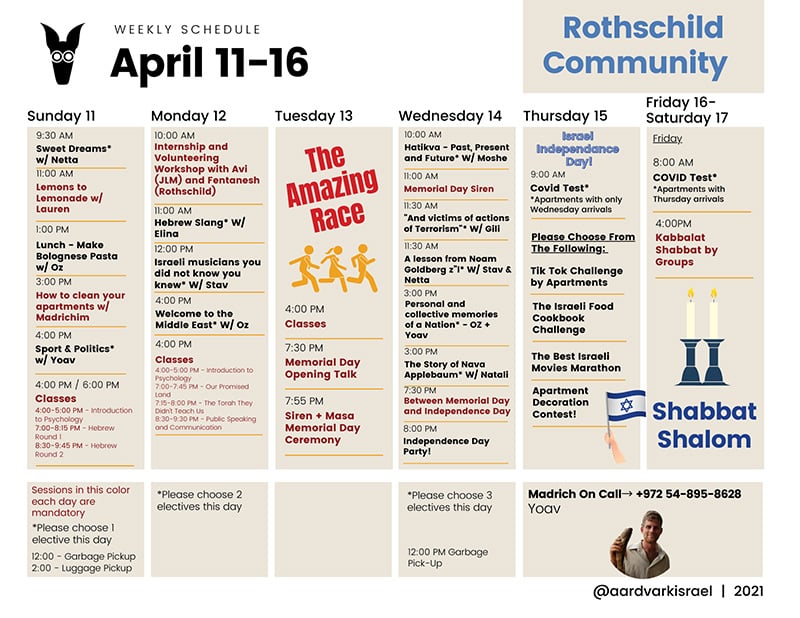
Check our out David Blitz, from London, with that super-cool football jersey! We sure liked it 😉
Right before we say goodbye, we leave you with Parashat Hashavoua, ‘Bereshit’ by Rabbi Liad:
“In Israel this Shabbat, we will begin reading the Torah from the beginning with בראשית ברא אלוקים – In the beginning G-d created. We will move through the seven days of creation concluding with the line ברא אלוקים לעשות – [on the 7th He abstained from all the work that] G-d created to do.
So much could be said about this portion. In fact, there are entire works comprised of over seventy chapters dedicated to just the first line of this portion! The sages clearly felt many secrets are hidden beneath the surface of the simple words. Indeed, they wonder why the Torah begins with a ב (beit), the second letter, as opposed to the first letter א (alef). After all, G-d is One. Moreover, why did He choose to create at all?
Perhaps the answers can be found when we look at another statement; “G-d created man in his image.” Later it reads, “It is not good that man is alone.” Effectively, G-d is hinting at a fundamental lesson. While G-d is alone and perfect, He tells us that in truth, if one is alone and therefore it is all just about oneself, he is far from true perfection. He, therefore, walked the walk. He led by example by Himself creating room for another – creation itself. The Torah intentionally begins with the second letter of the Hebrew alphabet as opposed to the first to tell us that the dedication of oneself to someone outside of himself is the highest calling of all.
May we heed that example dedicating ourselves to the perfection of not just ourselves but all those we come into contact with.”
Have a great weekend,
Yifat



